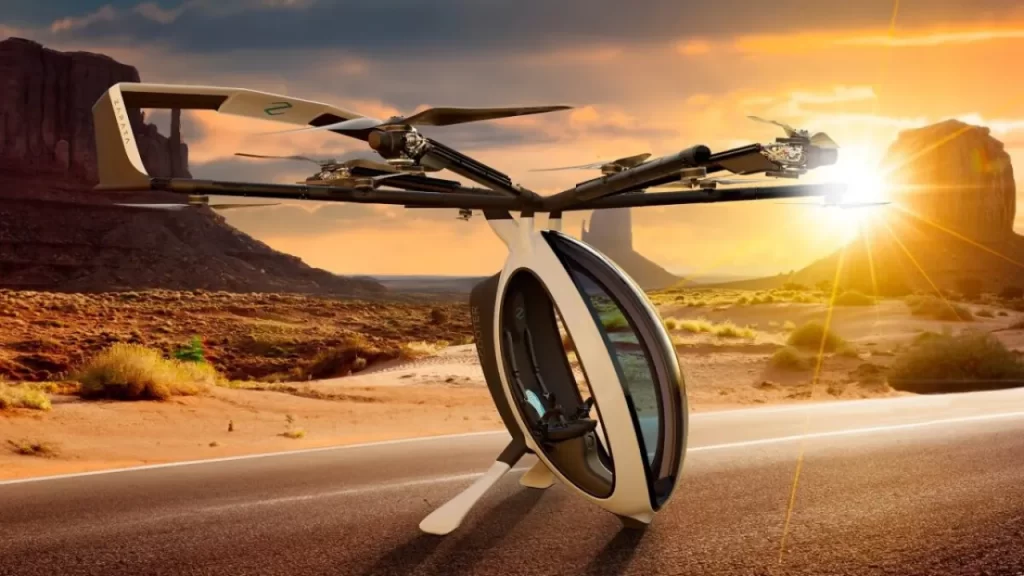With his most recent invention, the egg-shaped flying Airscooter, Franky Zapata, the brilliant inventor who famously crossed the English Channel on his ground-breaking hoverboard, has once again advanced the frontiers of transportation. This bizarre new car is intended to revolutionize transportation by providing a fresh approach to the problem of urban congestion.
The Airscooter, which resembles a prop from a science fiction film, travels through the air at an astonishing speed of 62 miles per hour (100 km/h) thanks to its hybrid-powered rotor blades. This oddball personal aircraft hopes to revolutionize transportation by cutting a typical two-hour vehicle trip during rush hour down to just ten minutes of air travel. The Airscooter may be driven by a variety of users since it is easy to maneuver from inside its unusual egg-shaped cockpit. Passengers can see breath-taking aerial vistas throughout their accelerated travels because to the aircraft’s ability to soar up to heights of 9,800 feet (2,900 meters).
The Airscooter is unquestionably innovative, but because of its hybrid propulsion system’s partial reliance on conventional fuel, it falls short of being ecologically benign. Because of this dependence on gasoline, its carbon impact is similar to that of a passenger automobile. The Airscooter is a crucial step toward a new era of personal mobility despite this flaw.
Zapata’s company, aptly named Zapata, is the driving force behind this eccentric endeavor. Although concept images have been revealed, the Airscooter is still in the process of being built. Its lightweight design, at just 115 kg, houses a hybrid-electric propulsion system that provides an impressive two-hour flight time.
In terms of regulatory compliance, the Airscooter falls under the Part 103 category, also known as ‘Ultralight’, which exempts it from requiring a pilot’s license. This classification enables enthusiasts to enjoy recreational flights without the burden of extensive certification.
Zapata envisions a future where the Airscooter contributes to passenger air transportation, and the company is taking steps to make this vision a reality. Plans are underway to establish flight centers in the United States, starting with Lake Havasu City, Arizona, where recreational flights will be offered to eager participants.
Franky Zapata’s pioneering spirit is not confined to the Airscooter. He is also working on other cutting-edge concepts like the JetRacer, a flying go-kart that uses kerosene-powered micro turbo-jet engines for vertical take-off and landing. Whether for recreational use or for emergency response, Zapata’s inventions are pushing the boundaries of what’s possible in the realm of personal transportation and adventure.
In a world where urban congestion continues to challenge traditional transportation systems, innovative solutions like the Airscooter offer a glimpse into the exciting possibilities that lie ahead. While questions about practicality, cost, and environmental impact remain, one thing is certain – Franky Zapata’s dream of personal flight is soaring to new heights.

